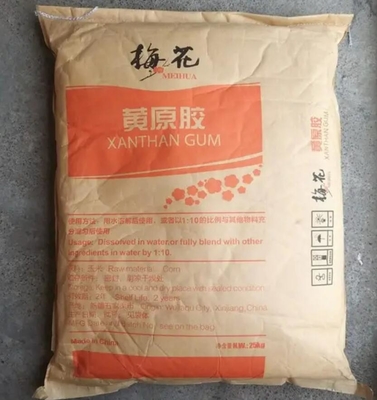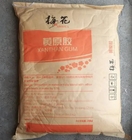CAS 11138-66-2 Food Thickener Ingredients E415 Xanthan Gum Powder Additive

Contact me for free samples and coupons.
WhatsApp:0086 18588475571
Wechat: 0086 18588475571
Skype: sales10@aixton.com
If you have any concern, we provide 24-hour online help.
x| Product Name | Food Thickener Ingredients | CAS | CAS 11138 66 2 |
|---|---|---|---|
| Thickeners | Xanthan Gum | Appearance | White Or Cream-color And Free-flowing Powder |
| Qty In 20' FCL | 18MT | Type | Thickeners |
| Use | Oil Field | ||
| High Light | Food Grade Xanthan Gum Powder,E415 Xanthan Gum Powder Additive,Food Thickener Ingredients 11138-66-2 |
||
CAS 11138 66 2 Food Thickener Ingredients E415 Additive Xanthan Gum Powder
Xanthan Gum
Xanthan Gum is the International Part thickening, suspension, emulsion, stable for at one. Performance of the most superior biological glue. Xanthan Gum in the industry for medical, cosmetics, toothpaste, shrimp feed, petroleum, tobacco, printing and dyeing, ceramics, pesticides, plastic explosives, water-soluble paint. Xanthan Gum is widely used in food, oil, ceramics, textiles, printing and dyeing, pharmaceutical, paper, paint and more than 20 industries.
| ITEMS | STANDARD |
| Appearance | white or cream-color and free-flowing powder |
| Viscosity | 1200 - 1600 mpa.s[ 1% Xanthan Gum in 1% KCl Brookfield, LVTD,spindle 3.60rpm, 25] |
| Assay(on dry basis) | 91.0 - 108.0% |
| Loss on drying(105oC, 2hr) | 6.0 - 12.0% |
| V1 : V2: | 1.02 - 1.45 |
| Pyruvic Acid | ≥ 1.5% |
| PH of 1% solution in water | 6.0 - 8.0 |
| Heavy metals(as Pb) | ≤ 20 mg/kg |
| Lead(Pb) | ≤ 5 mg/kg |
| Arsenic(As) | ≤ 2 mg/kg |
| Nitrogen | ≤ 1.5% |
| Ash | ≤ 13% |
| Particle size | 80 mesh: 100% min, 200 mesh: 92% min |
| Total plate count | ≤ 2000/g |
| Yeasts and moulds | ≤ 100/g |
| Pathogens germs | absence |
| S. aureus | Negative |
| Pseudomonas aeruginosa | Negative |
| Salmonella sp. | Negative |
| C. perfringens | Negative |
Xanthan Gum Details:
Xanthan Gum is a polysaccharide, derived from the bacterial coat of Xanthomonas campestris, used as a food additive and rheology modifier, commonly used as a food thickening agent (in salad dressings, for example) and a stabilizer (in cosmetic products, for example, to prevent ingredients from separating). It is produced by the fermentation of glucose, sucrose, or lactose by the Xanthomonas campestris bacterium. After a fermentation period, the polysaccharide is precipitated from a growth medium with isopropyl alcohol, dried, and ground into a fine powder. Later, it is added to a liquid medium to form the gum.
Biosynthesis
Biosynthesis Synthesis originates from glucose as substrate for synthesis of the sugar nucleotides precursors UDP-glucose, UDP-glucuronate, and GDP-mannose that are required for building the pentasaccharide repeat unit. This links the synthesis of xanthan to the central carbohydrate metabolism. The repeat units are built up at undecaprenylphosphate lipid carriers that are anchored in the cytoplasmic membrane. Specific glycosyltransferases sequentially transfer the sugar moieties of the nucleotide sugar xanthan precursors to the lipid carriers. Acetyl and pyruvyl residues are added as non-carbohydrate decorations. Mature repeat units are polymerized and exported in a way resembling the Wzy-dependent polysaccharide synthesis mechanism of Enterobacteriaceae. Products of the gum gene cluster drive synthesis, polymerization, and export of the repeat unit.
Uses
In foods, xanthan gum is most often found in salad dressings and sauces. It helps to prevent oil separation by stabilizing the emulsion, although it is not an emulsifier. Xanthan gum also helps suspend solid particles, such as spices. Also used in frozen foods and beverages, xanthan gum helps create the pleasant texture in many ice creams, along with Guar Gum and locust bean gum. Toothpaste often contains xanthan gum, where it serves as a binder to keep the product uniform. Xanthan gum (when sometimes not made from wheat—see Allergies for gluten-free allergy information) is also used in gluten-free baking. Since the gluten found in wheat must be omitted, xanthan gum is used to give the dough or batter a "stickiness" that would otherwise be achieved with the gluten. Xanthan gum also helps thicken commercial egg substitutes made from egg whites, to replace the fat and emulsifiers found in yolks. It is also a preferred method of thickening liquids for those with swallowing disorders, since it does not change the color or flavor of foods or beverages at typical use levels.
![]()
FAQ:
1, What kinds of certificates can you offer?
FDC Biotech is an ISO2008 9001 certified company, as for Xanthan Gum, we can offer HAPPC, KOSHER, HALAL Certificates, ect.
2, Is FDC Biotech a manufacturer or just a trading company?
FDC Biotech is both manufacturer and trading company, we are Xanthan Gum Supplier, at the same time, we are manufacturer of other products.
3, What is the Min Order Quantity of Xanthan Gum?
Different products have different MOQ, for Xanthan Gum, the MOQ is 1000kg.
4, What is the price of Xanthan Gum?
FDC Biotech is a famous Xanthan Gum supplier and manufacturer in China, and has been corporate with many Xanthan Gum suppliers for several years, we can provide you with cost-effective Xanthan Gum.
5, How long shall we wait for your reply?
We can guarantee to reply your inquiries of Xanthan Gum in less than 24 hours in working days.
6, What kinds of transportation types can you provide?
Our main transportation methods include air transportation, land transportation and water transportation.
7, What kinds of payment terms can you accept?
The most commonly used payment terms are T/T, L/C.
8, How long will I receive my good?
FDC Biotech has its own EDC warehouse in Shanghai, when your purchase order has been confirmed, inventory products will deliver within 1 week, other products delivery in 2 weeks.





